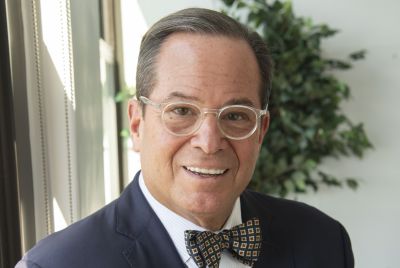Income Inequality Doesn't Harm Upward Mobility, Scholars Argue

The popular notion that income inequality impairs the American dream of upward social and economic mobility is easy to grasp. But it’s factually wrong, according to wealth and poverty scholars Scott Winship and Ed Conard.
Today the top 10 percent of income earners account for about 40 percent of the nation’s income, a much bigger share than 30 years ago. And the top 1 percent own about 20 percent of the nation’s wealth.
What’s controversial is whether or not the rise in income inequality is making it more difficult for people to earn higher incomes as their careers progress. In other words, what is propelling the wealthiest Americans? Is it primarily creative entrepreneurship like that behind Apple, Google and Facebook, luck of where you’re born and to whom, or government handouts to particular businesses and industries?
Winship, a self-professed “Liberal-tarian” and scholar researching economic mobility and inequality at the conservative-leaning think tank Manhattan Institute, says mobility has remained lower than ideal in the U.S. for decades but is not caused by the rise in income inequality. He points out that if increasing inequality impaired upward mobility, economists would find that the amount of people rising through income classes has declined. But according to one of the economists who developed the heavily cited top 1 percent estimates, Emmanuel Saez, upward mobility in the U.S. has remained stable over the second half of the 20th century.
And if increasing inequality impaired upward mobility, you would expect places with a lot of inequality to have lower mobility, yet the U.S. has more inequality and about the same mobility as countries like Canada and Sweden, Winship said. He cites a study published this year by Canadian economist Miles Corak, who coined “The Great Gatsby Curve,” mentioned by Fed Chair Janet Yellen in a recent speech on inequality.
The Great Gatsby Curve linked countries’ inequality levels to the mobility their citizens enjoy but uses a measure that automatically assigns a country a lower mobility value when its growth in inequality is higher relative to other countries. Corak’s latest research doesn’t automatically adjust mobility downward for differences in inequality and finds “almost no differences in upward mobility between Canada, Sweden and the United States.”
In another study, Saez and his team conclude that developed countries with higher income concentrations like the U.S. have mobility rates no lower than countries with low inequality. They found American counties follow the same pattern.
“If income inequality hurts opportunity, why is it so hard to find that link when you look across time and look over space?” Winship asked at a debate in New York Thursday evening.
His debate partner Conard, a visiting scholar at the American Enterprise Institute and businessman, argues that while economists haven’t found a way to increase economic mobility, growing the economy has and continues to improve living standards for the poor and middle classes. So while the wealthiest earn greater shares of the nation's economic output, that output has grown enough over 30 years that the poor and middle classes have also grown their wealth. Conard also points out that economic growth manifested as wage gains in the 1950s and 1960s, when the supply of labor was restricted, and today manifests as job gains because the labor supply is relatively unrestricted with the baby boom, women joining the workforce and increased immigration. Since 1980, U.S. employment has grown 50 percent, twice as fast as Germany and France and three times faster than Japan, where income inequality is less pronounced.
“It's disingenuous to close one eye, ignore America's extraordinary employment growth relative to its peers and claim that income inequality hurts the middle and the working class,” he said. “No other economy has done more to help the middle class and working poor than the U.S. economy.”
The debate, hosted by Intelligence Squared U.S., pitted Winship and Conard against Elise Gould, senior economist at the Economic Policy Institute, and venture capitalist Nick Hanauer. Gould and Hanauer argue common sense shows that as the wealthiest earn larger portions of the nation’s income, those at the bottom find it harder to increase their own incomes and the nation’s economy grows slower.
Before the debate, 60 percent of the audience said they believed income inequality impaired the American dream, 14 percent disagreed, and 26 percent were undecided. After, only 53 percent agreed income inequality impairs upward mobility, and 37 percent said they disagreed, leaving 10 percent undecided.
© Copyright IBTimes 2024. All rights reserved.






















